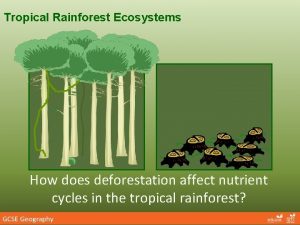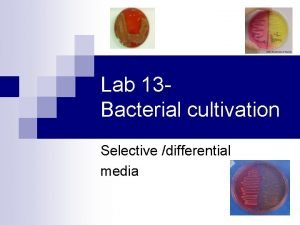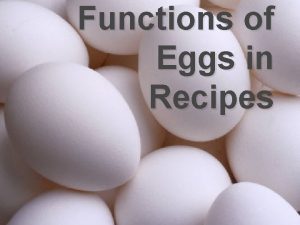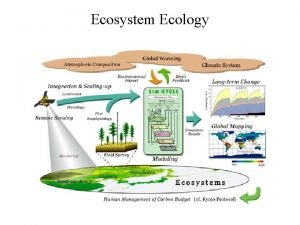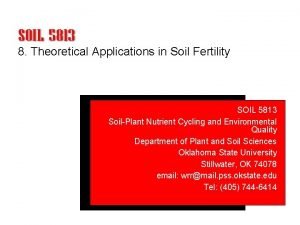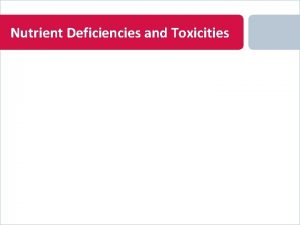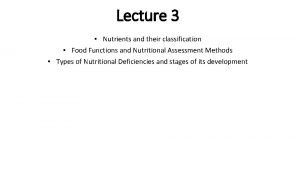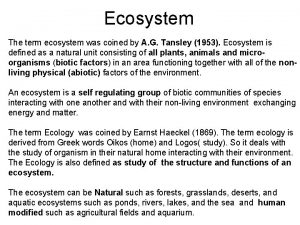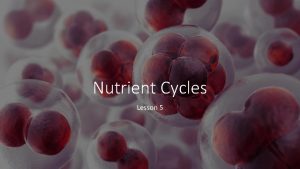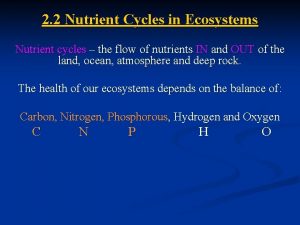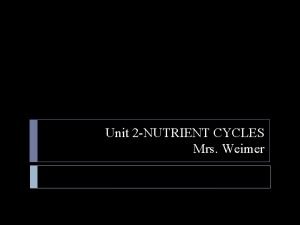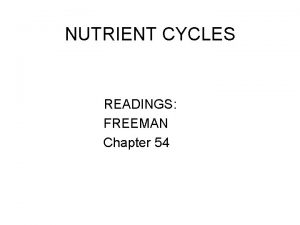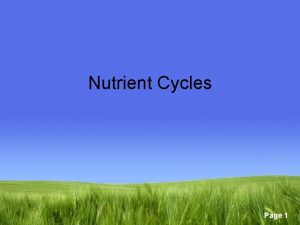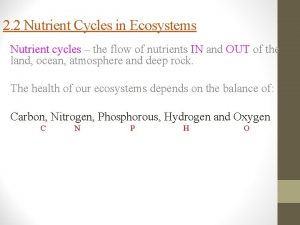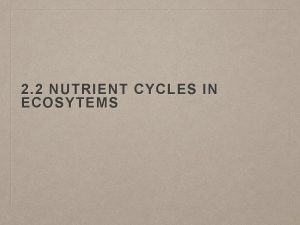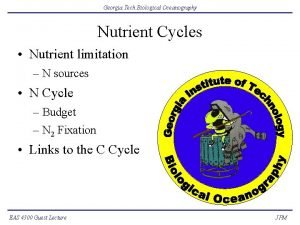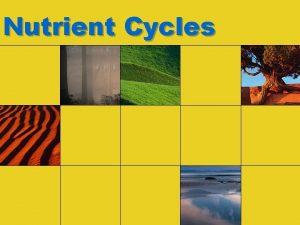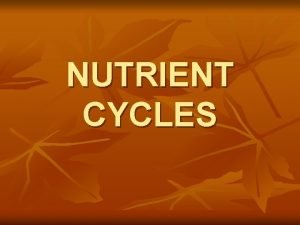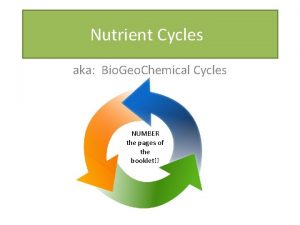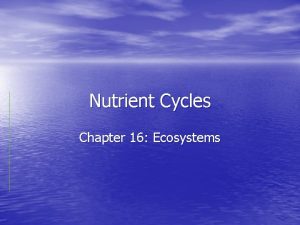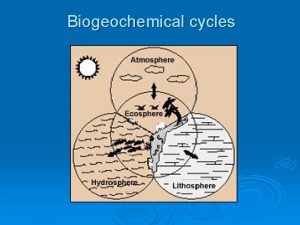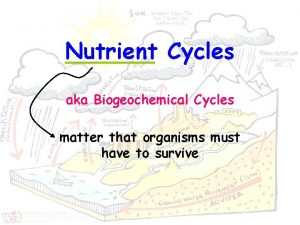Ch 9 Communities Community Characteristics Many Nutrient Cycles
























- Slides: 24

Ch. 9 Communities

Community Characteristics • Many!

Nutrient Cycles • Elements cycle • Communities differ in rates, where nutrients located

Nutrient Cycles • Ex: • Tropical rain forest – C in • Subalpine forest – C in

• Standing biomass: Productivity

Productivity • Net primary productivity: energy

Net primary productivity (Pn) • Desert: Lowest on land • Mangrove forest, marsh, swamp: Highest! Pn=net primary productivity (metric tons per ha/yr) B=standing biomass (tons/ha)

Energy Conversion • Energy conversion efficiency: % incoming energy into plant mass – Note small values

Community Characteristics • Change through time. . .

• • Community Characteristics Change through time. . . Succession: discuss later Stability: Components: – Resistance: – Resilience: – Persistence: Only resistance not worth effort to quantify. WHY? ?

And now, for something completely different. . Classification of communities

Classification of communities • Data collection (sampling) covered in lab lectures

Classification of communities • Data collection (sampling) covered: lab lectures • Recall……. • Association: more formal and precise unit – basic unit plant community classification – composed of stands (stand: particular member association) – taxonomic analogy: association = sp. , stands = inds. • How decide which stands belong to same association?

Classification of communities • 4 major approaches: • • 1) Tabular methods 2) Cluster analysis 3) Association analysis 4) Ordination methods

Tabular methods • American approach: based on “dominance” (physiognomic) – Importance Values Plant Ecology

Tabular methods • Association based on dominants (layers) – Ex, Pinus ponderosa/

Tabular methods • European approach: based on entire flora • Braun-Blanquet technique (relevé technique) Sounds French

Tabular methods • Braun-Blanquet (relevé) technique • Sample called relevé – 1) – 2)

Tabular methods • Braun-Blanquet (relevé) technique • Sample called relevé – – 1) 2) 3) 4)

• Classification: Tabular methods Cover, sociability (dispersion)

Tabular methods • Differentiated table has differential species: – Have hi fidelity: – Have hi constancy:

• Note: • 1) Tabular methods Olympic National Park, Washington

Cluster analysis • Expresses similarity of stands graphically (2 D) • Similarity? Coefficient of Community (CC) • CC:

• 2 major indices: Cluster analysis – Jaccard’s Index – Sorensen’s Index
 Transport medium examples
Transport medium examples Apes nutrient cycles
Apes nutrient cycles Nutrients cycle
Nutrients cycle Nutrient cycles in marine ecosystems
Nutrient cycles in marine ecosystems Why is primary succession an orderly process
Why is primary succession an orderly process Termination of brachial artery
Termination of brachial artery Nutrient cycle of a tropical rainforest
Nutrient cycle of a tropical rainforest What are the six nutrient groups
What are the six nutrient groups Differential media
Differential media Eggs as emulsifier
Eggs as emulsifier Nutrient cycle in the serengeti
Nutrient cycle in the serengeti Gersmehl model deciduous woodland
Gersmehl model deciduous woodland Foods used in nutrition activities should be nutrient-dense
Foods used in nutrition activities should be nutrient-dense Bray nutrient mobility concept
Bray nutrient mobility concept Nutrient chain foldable
Nutrient chain foldable Journey 2050 student handout 2 word search
Journey 2050 student handout 2 word search Chlorsis
Chlorsis Nutrient basics
Nutrient basics Funtions of food
Funtions of food Journey 2050 student handout 3 crossword puzzle
Journey 2050 student handout 3 crossword puzzle Which ecosystem is this nutrient cycle from?
Which ecosystem is this nutrient cycle from? Defination of nutrients
Defination of nutrients Dorsalis pedis artery
Dorsalis pedis artery Skeletal system
Skeletal system Tamoxifen nutrient depletion
Tamoxifen nutrient depletion






